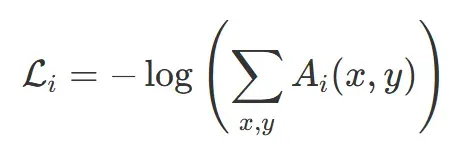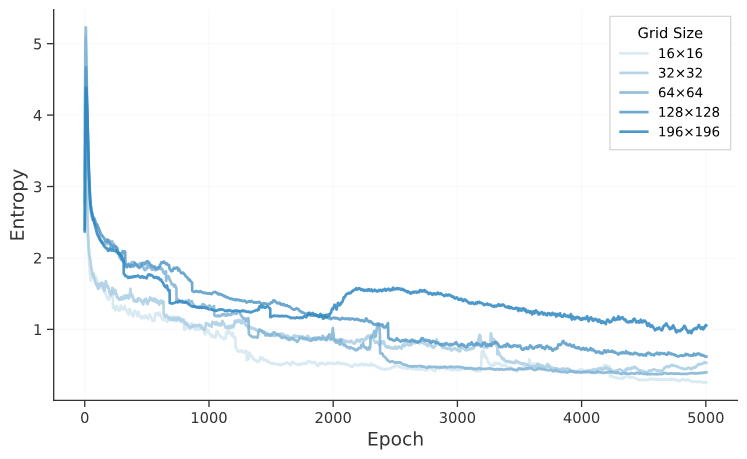In the Petri Dish of Digital Life, AI Learned to Fight, Form Alliances, and Compete for Territory

Artificial Life Research Report
---
Introduction
For years, Artificial Life (ALife) research has revolved around a central question:
Can the complexity of life naturally emerge within computational systems?
At the core of this inquiry is open-ended complexification — the idea that artificial systems, like biological organisms, can spontaneously generate new structures and functions via ongoing adaptation and evolution.
In recent developments, Neural Cellular Automata (NCA) have offered fresh insights. While NCAs can demonstrate distributed growth and self-organization through local rules, most existing models rely on a single fixed structure. This limits the ability to escape evolutionary closure.
---
PD-NCA Overview
Researchers at Sakana AI have introduced PD-NCA (Petri Dish Neural Cellular Automata), where multiple NCA agents coexist with a sole objective: self-replication.
Key innovations compared to traditional NCA:
- Traditional NCA: Single, fixed model; parameters remain unchanged after training.
- PD-NCA: Many independent, continuously learning NCAs with their own parameters, updated via gradient-based optimization during simulation.
In PD-NCA:
- Agents share a common spatial substrate, the Petri Dish.
- NCAs interact through differentiable attack and defense channels, exhibiting both competition and cooperation.
- A learning-in-the-loop mechanism drives adaptation, allowing life-like structures to emerge naturally.

Resources:
- Paper: Petri Dish Neural Cellular Automata — Link
- Repository: https://github.com/SakanaAI/petri-dish-nca
---
Emergent Behaviors in PD-NCA
Experiments show PD-NCA can produce:
- Cyclic dynamics
- Territorial defense
- Spontaneous cooperation
In demo videos, colors represent distinct NCA agents, revealing evolving complex patterns.
---
Methodology

Simulation Structure
- Grid (W × H): Discrete spatial layout; each cell stores channels (C).
- At time t, cell state s at position (x, y) includes:
- Attack channel (a)
- Defense channel (d)
- Hidden state (h)

---
Four Stages Per Time Step
PD-NCA simulation cycles include:
- Processing
- Competition
- Normalization
- State Update
---
1. Processing Stage
Each NCA agent:
- Defined by a convolution function.
- Observes the state of (x, y) and neighbourhood (N).
- Produces a state update proposal (Δs).

Survival mask (A): Agents propose updates only in cells where they live or adjacent cells.
Persistent Background Environment
A static background environment (E):
- Initialized randomly at start, remains fixed.
- Makes its own update proposals, keeping dynamics active and challenging agents.
---
2. Competition Stage
The system evaluates proposal strength via interaction strength between agents and background.




---
3. Normalization Stage
Resources are limited — apply Softmax normalization:
- Converts competitiveness scores into weights (w).
- Temperature (τ) controls competition sharpness: lower τ favors decisive winner outcomes.

---
4. State Update Stage
Next state:
- Combines current state with weighted sum of proposals.

Survival mask (A) updated:
- Agent survives if w ≥ threshold.


---
Survival & Visualization
- Threshold set to 0.4, allowing two agents to coexist per cell.
- If threshold > 0.5 → winner-takes-all, less interesting dynamics.
- Inspired by Mixture of Experts (MoE) (top-2 experts selection).
Visualization shows only the agent with highest weight per cell.
---
Optimization Objective
Agents aim to maximize territory:
- Loss: negative log survival rate minimization.

This encourages agents to balance offense (attack channels) and defense (defense channels).
---
Experimental Insights
Dynamic Characteristics
- Larger grids & more agents → richer behaviors.
- Potential future work: multi-GPU scaling.



---
Impact of Learning
- Without learning → stable, minor fluctuations.
- With learning → periodic behaviors, continual state evolution.
- Backpropagation significantly increases complexity & sustainability.
---
Hyperparameter Search
- Some runs exhibit rock-paper-scissors dynamics.
- Early stability disrupted by learning-enabled stages.
---
Hypercycles
- Tested with 3–6 NCAs.
- Long hypercycles unstable; collapse to shorter loops.
- Observed parasitic behavior and defector cascades.

---
Practical Applications
Beyond ALife research:
- PD-NCA concepts inspire multi-agent systems, game design, and AI creative ecosystems.
- Platforms like AiToEarn官网 allow creators to:
- Integrate AI content generation.
- Publish across major platforms.
- Monitor analytics & AI model rankings (AI模型排名).
- Useful for showcasing & monetizing complex AI simulations.
---
Conclusion: PD-NCA marks a step towards open-ended evolution in computational ecosystems, offering a sandbox for emergent complexity driven by continuous learning, competition, and cooperation.
---
Do you want me to also condense this into a one-page executive summary so it’s more readable for non-technical audiences? That would make the report more accessible for presentations or pitching.



